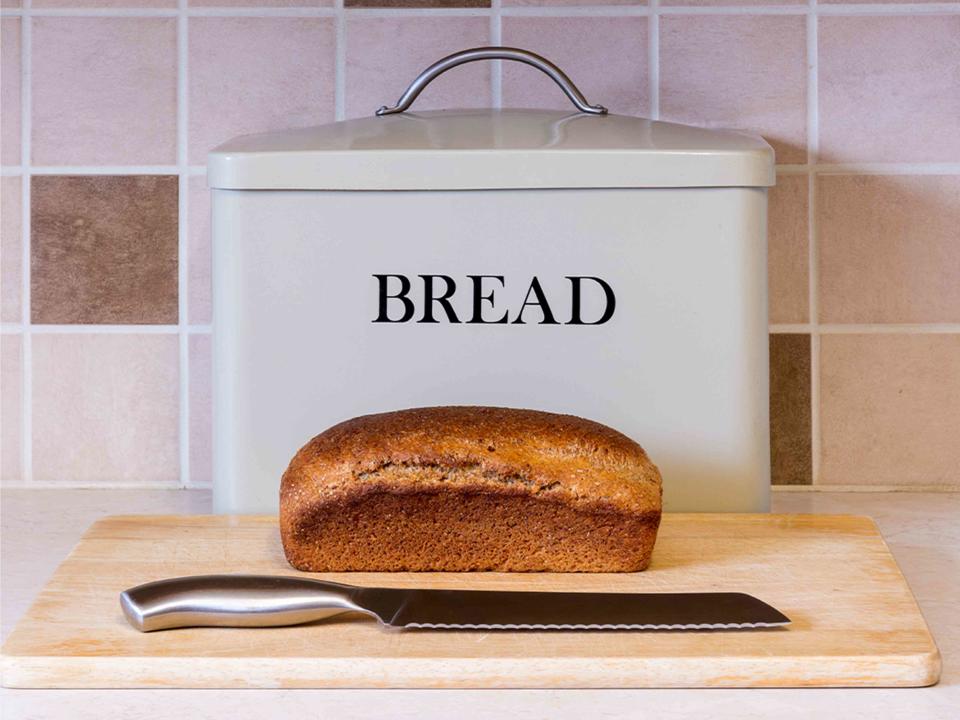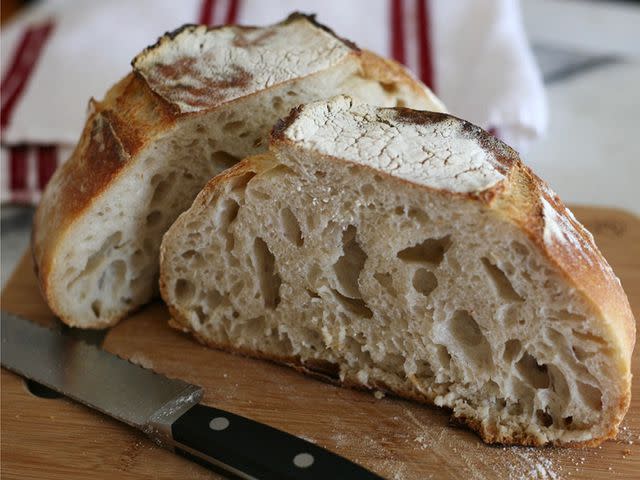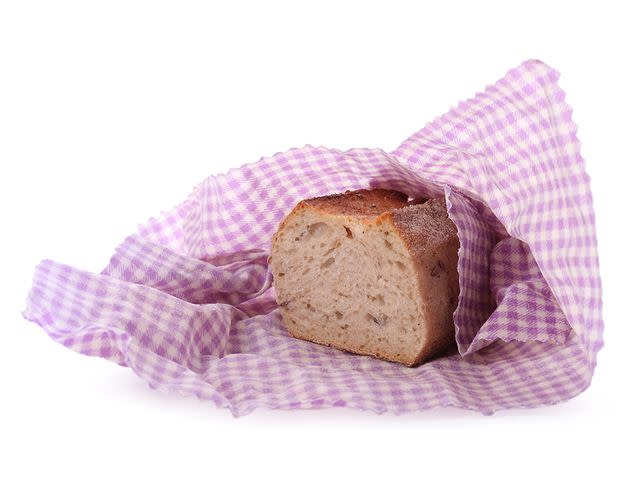How to Store Fresh Bread So It Lasts Longer and Prevents Mold
And some shocking advice on how to slice a loaf!

Nicholas Murrall/Getty Images
It is frustrating to make a loaf of homemade bread, only to see it turn moldy within a few days. This happens because bread is moist, and mold spores love moisture. Particularly at this time of year, with lots of heat and humidity, mold is more prone to flourish.
People are often advised to store freshly baked bread in plastic to inhibit it from going stale. In the short term, this is effective at keeping bread soft, but eventually it can promote mold growth by preventing air circulation and creating a humid environment inside the bag. Usually within five to seven days, you'll see the dreaded fuzzy blue-green spots starting to appear.
This leads to the obvious question: Is plastic truly the best way in which to store fresh bread? The answer: It depends. Here are some factors to consider when deciding how to store bread.
If you have soft, enriched bread like challah, brioche, or pain de mie, and you know you're going to eat it within two to three days, then plastic is your best bet. If it's going to take longer than that, then you should freeze it (also in plastic). Wrapping bread in foil works, too, as it is airtight.
If you have round bread with a crispy crust like a sourdough boule, you don't have to wrap it at all. Put it cut-side down on a clean kitchen counter and let its thick crust protect the interior. It will dry out somewhat, but less than you may expect.

Allrecipes
King Arthur Flour explains: "A round loaf has less surface area than a longer loaf, limiting moisture evaporation. And a large loaf simply takes longer to dry out, especially if you shield its cut side by placing it flush with a solid surface to block airflow."
Another hack is to put a loaf cut-side down in an empty Dutch oven with the lid on. This keeps it in a dark place, which is also a wise strategy to discourage mold. Other dark locations include cupboards, drawers, your oven, or the microwave (not in use, of course).
Do look for cooler storage spots in the kitchen, but avoid the refrigerator! Chilling bread is much worse than freezing it, as it still allows moisture to evaporate and dries the bread out. Only do this if you're planning to toast it.
Bread boxes have favorable reviews, as they provide just enough air circulation to minimize molding, so consider getting one if you are a regular bread-baker. Some people swear by keeping loaves in sealed Pyrex or Tupperware containers with a layer of uncooked rice in the bottom; the rice appears to absorb just enough moisture to discourage mold, while the bread stays soft. Cloth drawstring bags did not score favorably in King Arthur's books, resulting in a hard crust and dried-out interior.
Some people swear by beeswax wraps to store bread. Abeego, a Canadian manufacturer of beeswax wraps, did a side-by-side comparison of artisanal loaves wrapped in a paper bag and a beeswax wrap. At the end of a week, the bread in paper was rock hard and the bread in beeswax was still soft. The company's advice: "Crusty loaf? Wrap it loose. Soft loaf? Wrap it tight. All loaves—slice as consumed."

New Africa/Adobe Stock
That leads us to one final important point—how and when you slice bread. A general rule of thumb is only to cut it as needed, unless you're freezing it, in which case pre-slicing makes it easier to thaw and toast smaller portions. King Arthur has a brilliant suggestion to cut sandwich loaves from the center out. Cut a loaf in half, cut a slice to eat, then rejoin the two halves, pop them in a bag, and it will stay fresh longer because the cut surface is not exposed. When you cut from an end, there is nothing to prevent moisture loss.
If you end up with a super stale baguette or other crusty loaf, try dousing it with water from the tap and putting in a 300˚F oven for 10 to 20 minutes. It is an effective way to revive a stale loaf temporarily, though you will need to eat it right away.
In conclusion, while plastic still seems to be the most straightforward storage method for bread (as long as you’re not storing it for more than a couple days), there are other factors to consider. You may have to play around with different methods to find what works best for your consumption speed, the types of bread you like to buy, and the temperature and humidity of your kitchen.

